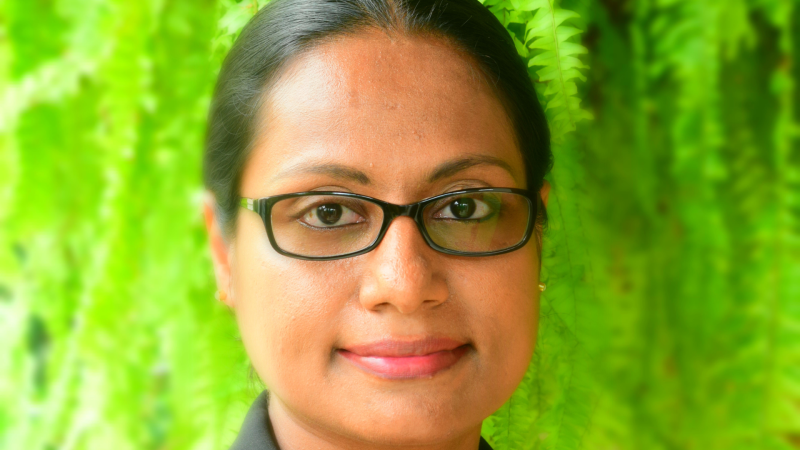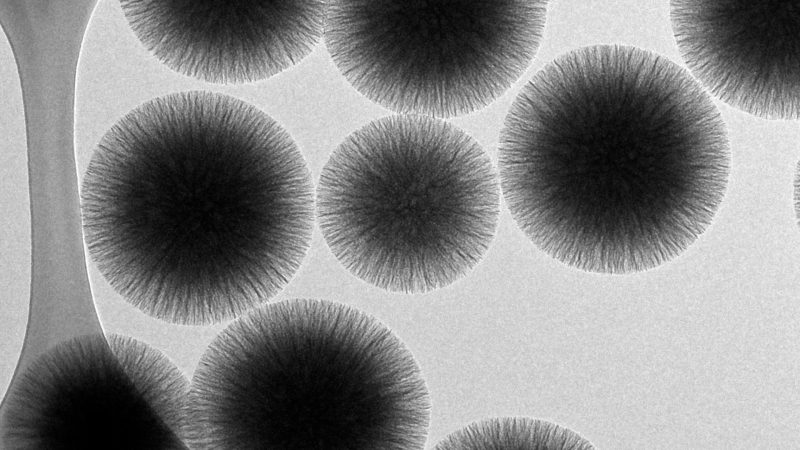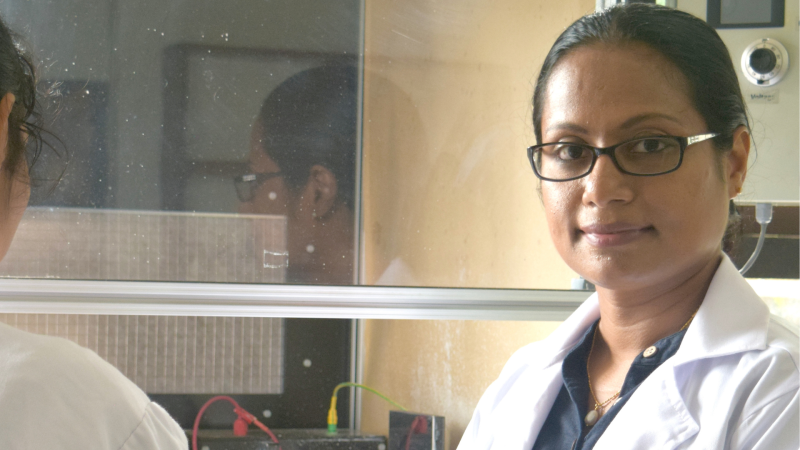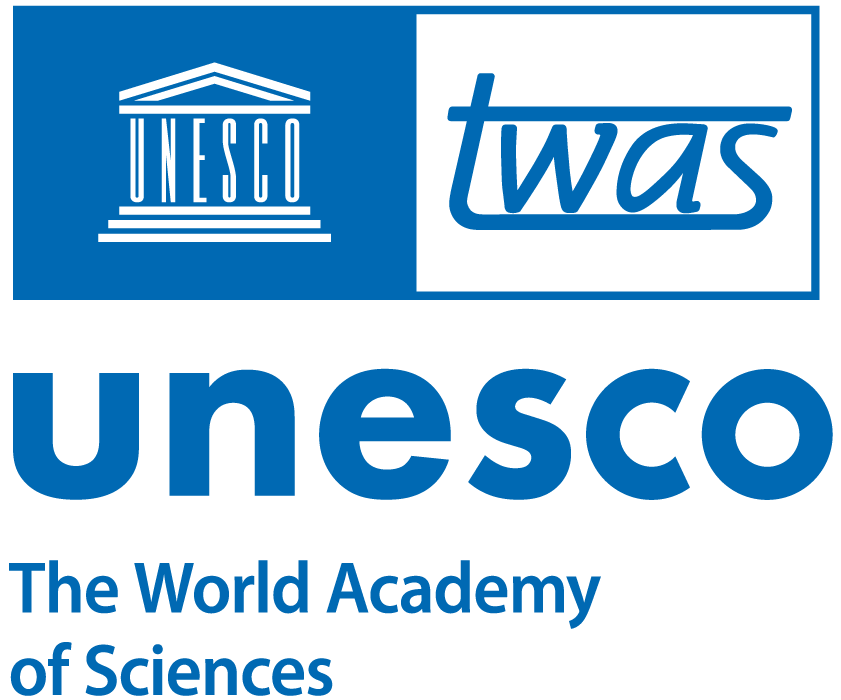Nanotechnology can make a big difference. It has many applications, from drug delivery in the pharmaceutical industry to water filtration and slow-release fertilizer systems in agriculture.
Sri Lankan chemist Imalka Munaweera has made outstanding contributions in this field, and TWAS recognized her accomplishments by bestowing her with the 2023 TWAS-Atta-ur-Rahman Award in Chemistry. Sponsored by The Searle Company Ltd., this prize is given to chemists under 40 who have lived for at least two years in one of the 66 science-and-technology lagging countries identified by TWAS.

Munaweera, is a senior lecturer at the University of Sri Jayewardenepura, Sri Lanka. She is also a recipient of a TWAS Research Grant in 2020, supported by Sida, for developing an innovative device for water purification, and of an OWSD-Elsevier Foundation Award in 2021 for her research in nanotechnology.
The grant, in particular, allowed her to purchase cutting-edge equipment for her research with undergraduate and graduate students. Well-equipped with the tools needed to conduct meaningful experiments, her team was able to produce new results.
With the TWAS-Atta-ur-Rahman Award, Munaweera has achieved another career milestone. To shed light on the accomplishment and her work, she answered these questions submitted by TWAS. The interview has been shortened and edited for clarity.
What is the relevance of the TWAS-Atta-ur-Rahman Award for your career?
This honour reflects my dedication and contributions to the discipline, serving as a powerful motivator to push the boundaries of research. As a young researcher, this recognition inspired me to further explore the frontiers of science, seeking new insights and breakthroughs that can impact society at large.

What are inorganic nanostructures?
Inorganic nanostructures are made of materials such as metals, metal oxides, ceramics, and metalloids, all crafted at the nanoscale (one nanometer is a billionth of a meter). These tiny yet powerful nanomaterials are playing a pivotal role by enhancing innovations in advanced electronics, sustainable food packaging, cutting-edge textile engineering, and the rapidly evolving medical and pharmaceutical industries.
Can you name some applications?
One application I focused on was the creation of advanced drug formulations, targeted at cancer therapy and drug delivery, in particular with lung and skin cancer, which represent a challenge in public health on a global scale. I devised a groundbreaking methodology that integrates chemotherapy and radiotherapy in the same drug formulation, and an innovative radiotherapeutic bandage. This pioneering approach empowers clinicians to precisely target malignant tumors, facilitating a more aggressive and effective reduction of tumor burden in patients. It improves treatment outcomes and enhances the quality of life for individuals affected by these challenging cancers.
How does your research help in fighting human infections?
Bacterial biofilms are bacterial communities that show enhanced survival towards antibiotics because they build a physical scaffold, the biofilm, which protects them from the outer world. Against these biofilms, I developed temperature-sensitive nanoparticles designed for the targeted delivery of antimicrobial agents.
I also explored a variety of nanobubble formulations, small bubbles containing a drug, which are promising candidates to facilitate the opening of the blood-brain barrier, a highly selective semipermeable layer of cells that regulates the flow of chemicals between the circulatory system and the central nervous system. This barrier poses a significant challenge in treating central nervous system disorders.

What about your research in the food sector?
Increasing the shelf-life of fruits and vegetables is becoming crucial with a fast-growing population. I developed a novel application, an edible coating made by combining layers of two different substances, which we tested by spreading it on freshly plucked strawberries. Initial findings indicate that the so-called nanohybrid-coated strawberries have an extended shelf life, from 9 to 15 days, highlighting their potential for food preservation applications.
What is your current field of investigation?
My current research concentrates on the innovative development of metal nanoparticles and hybrid metal-fiber nanostructures. These advanced materials hold great promise, as they enhance the efficacy of treatments aimed at targeting a wide variety of microbes within biofilms. By using these nanomaterials, we aim to improve the effectiveness of microbial control strategies and address the challenges posed by biofilm-related infections.
How can scientists promote science and research in your country, in particular among girls and women?
To promote science among girls and women we should focus on broadening the scope of research undertaken by scientists, exploring innovative fields and topics that directly address the critical needs of our country and the global community. By doing so, we can tackle pressing challenges and foster sustainable solutions that benefit society as a whole.
What goals would you like to achieve with your research?
By enhancing our understanding of these cutting-edge technologies, I aimed to create new pathways for the effective delivery of therapeutic agents directly to specific areas within the human body, ultimately improving treatment outcomes for patients. Additionally, I sought to develop novel nanomaterial-based formulations to address biofilm infections, which impact many aspects of daily human life.
Cristina Serra

